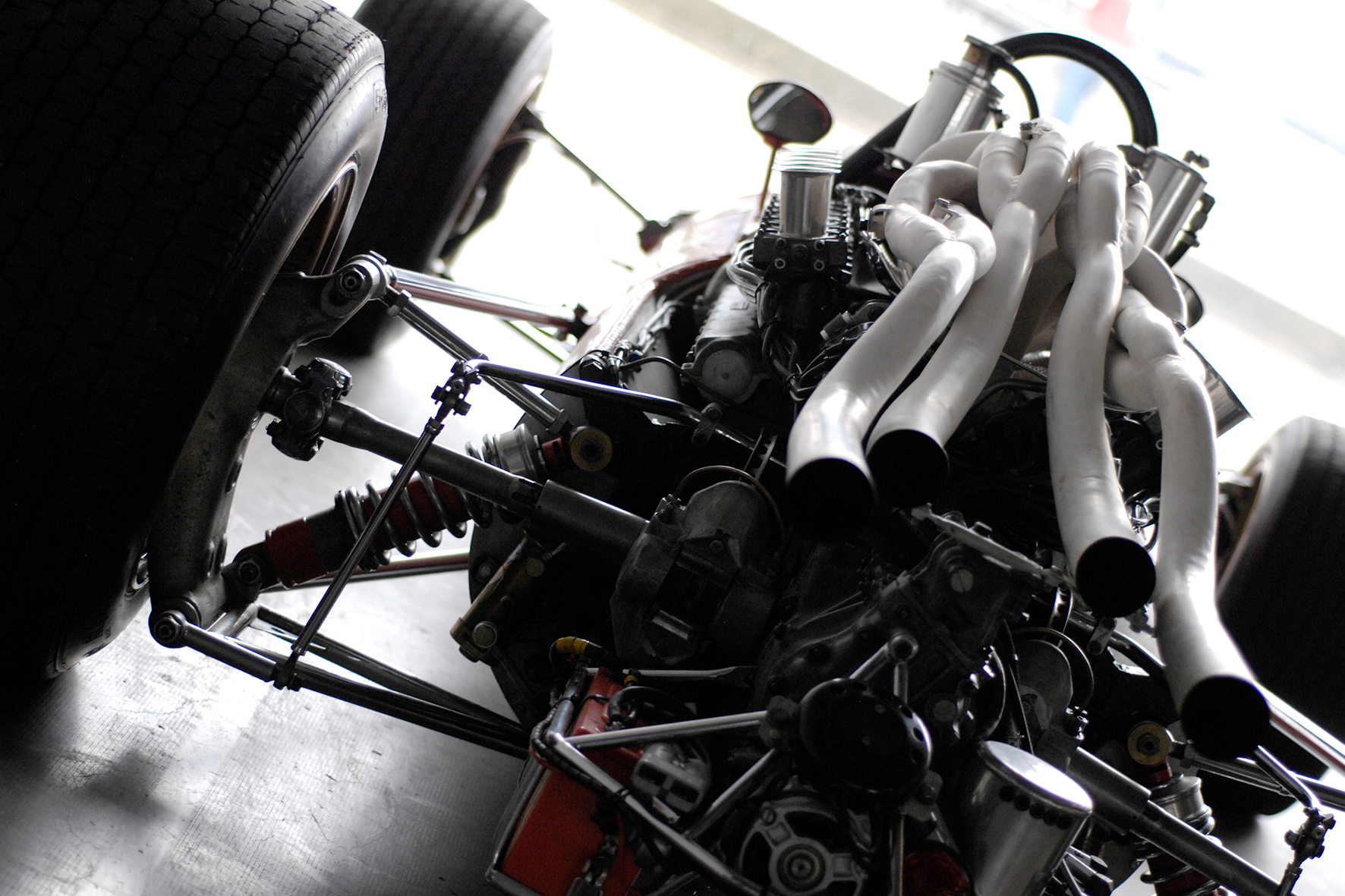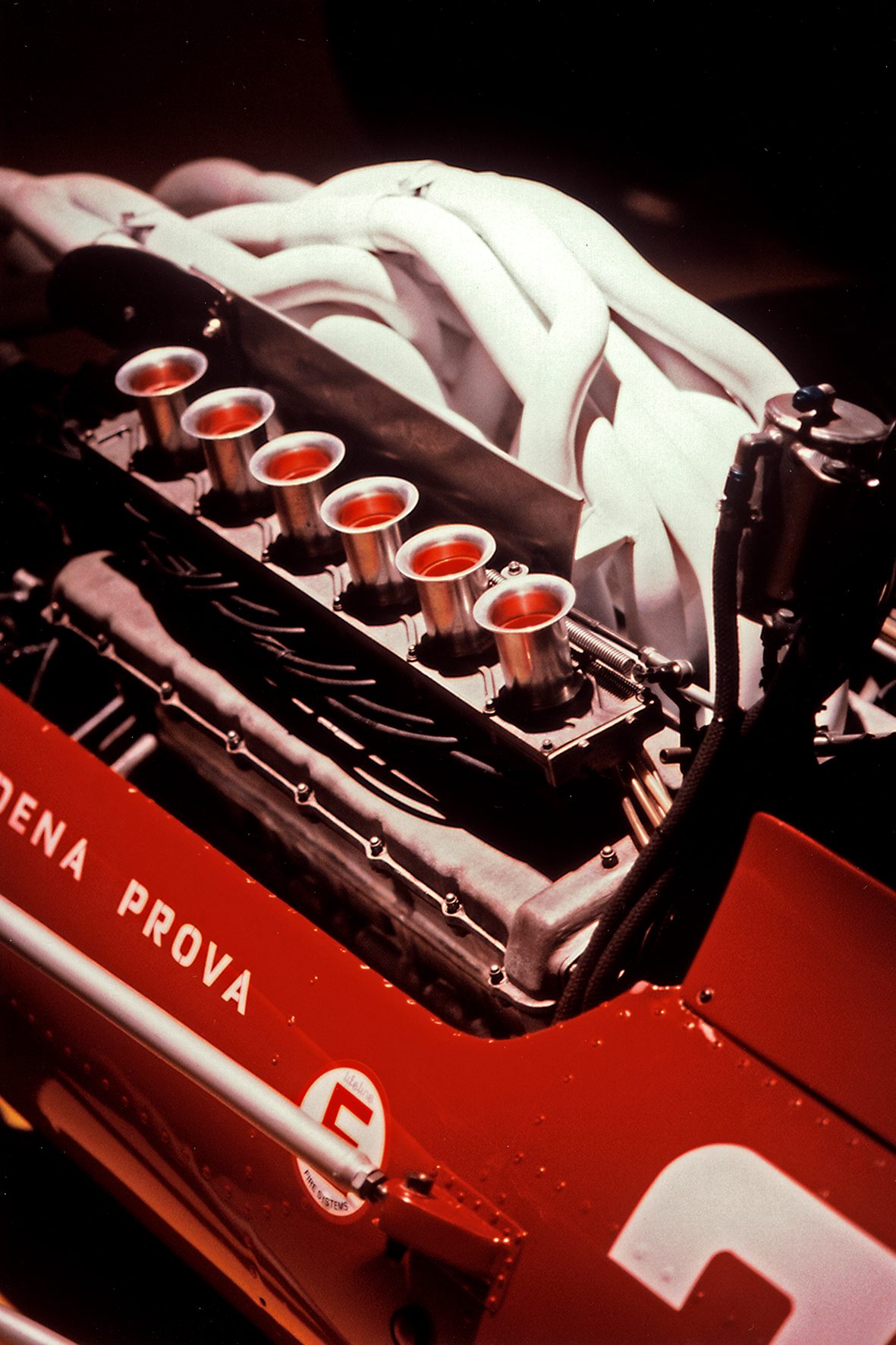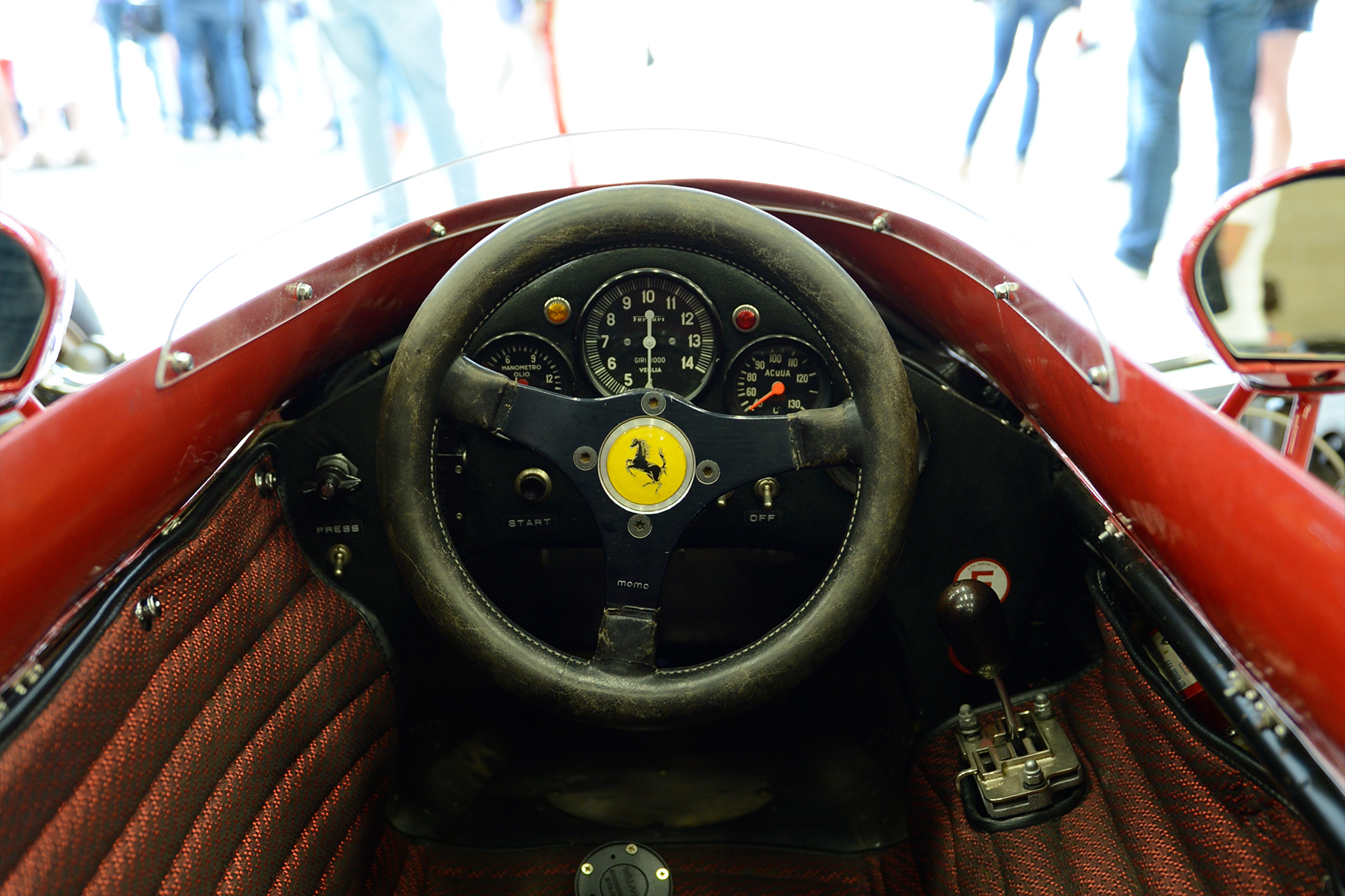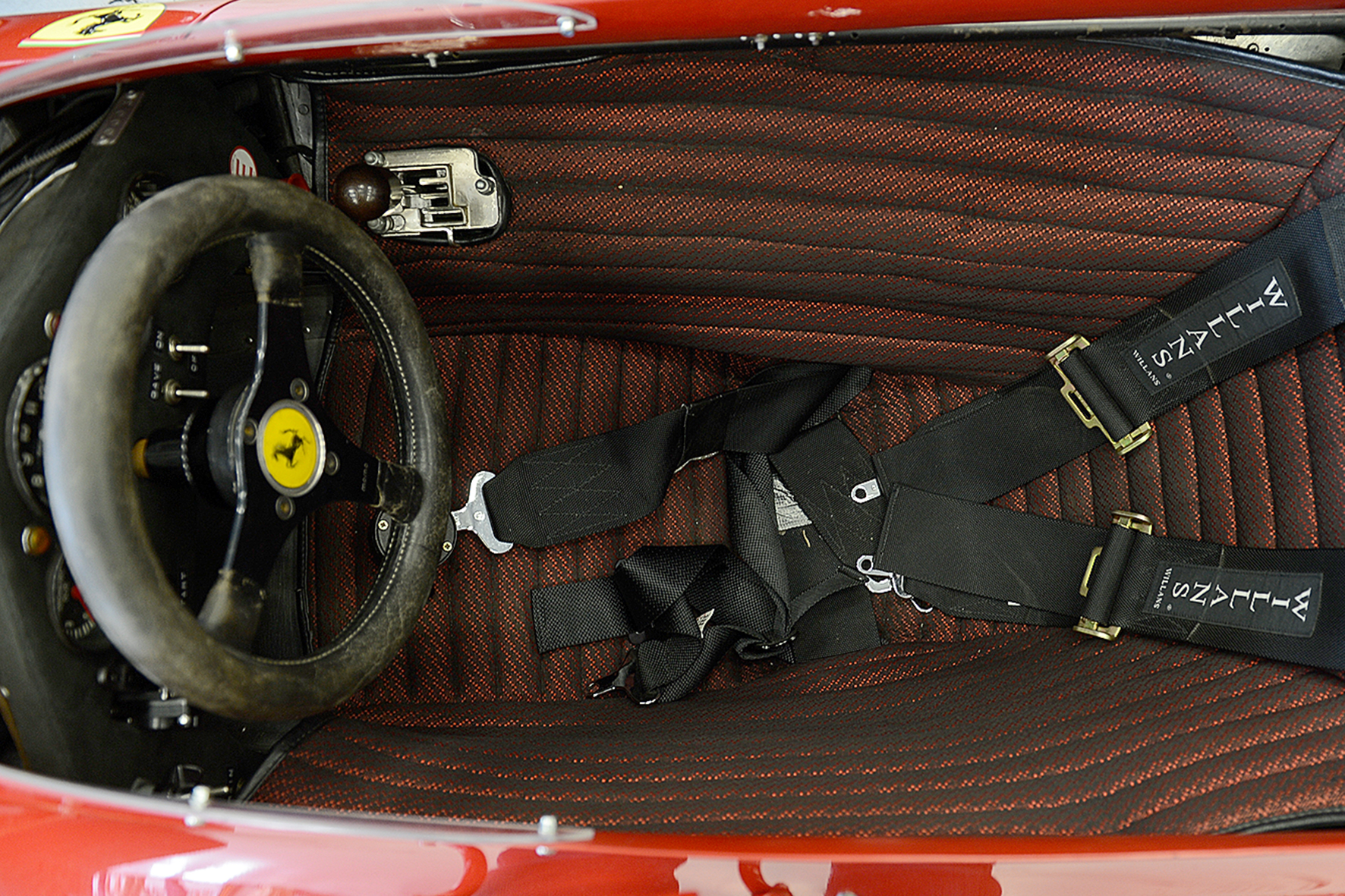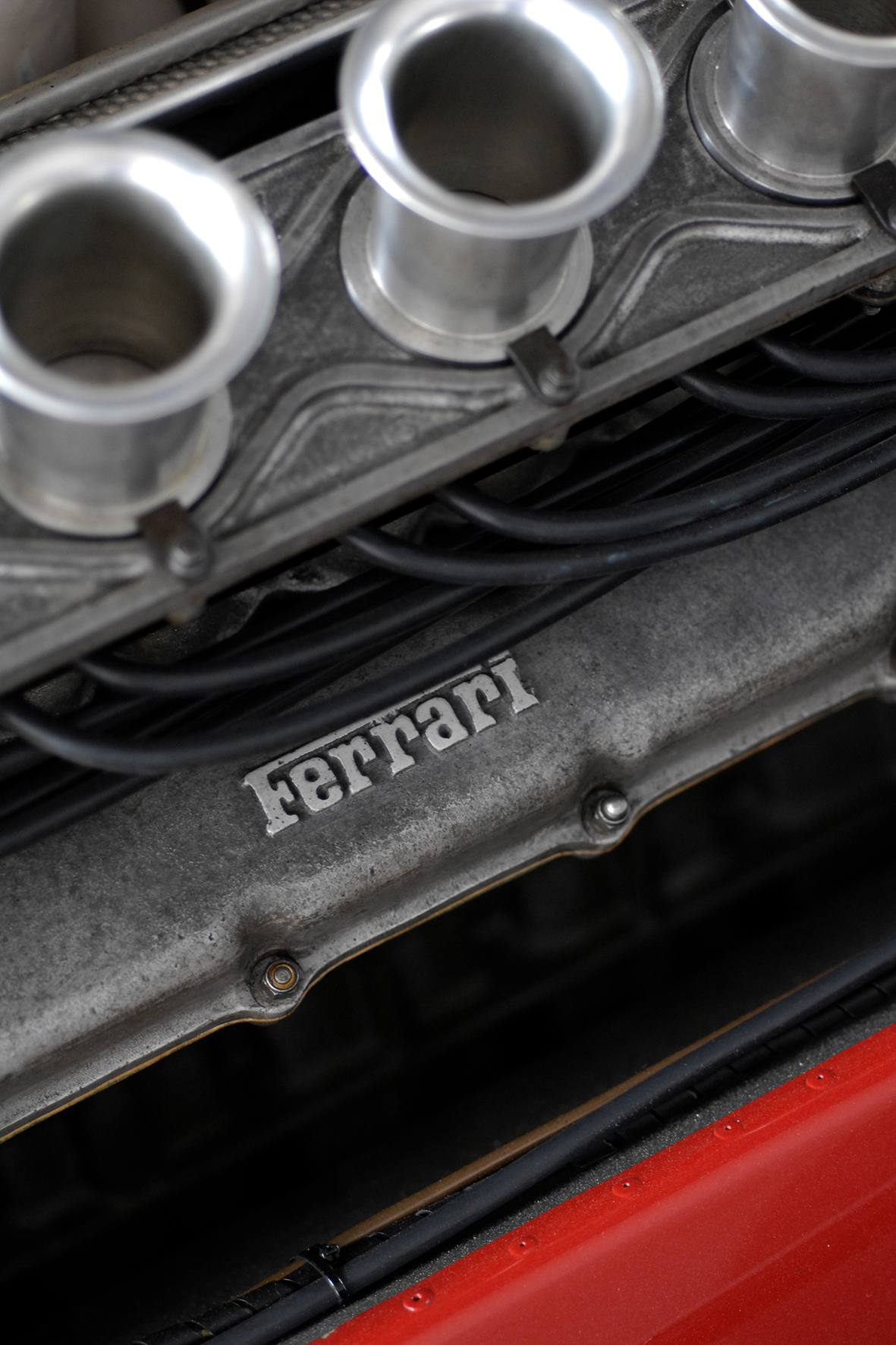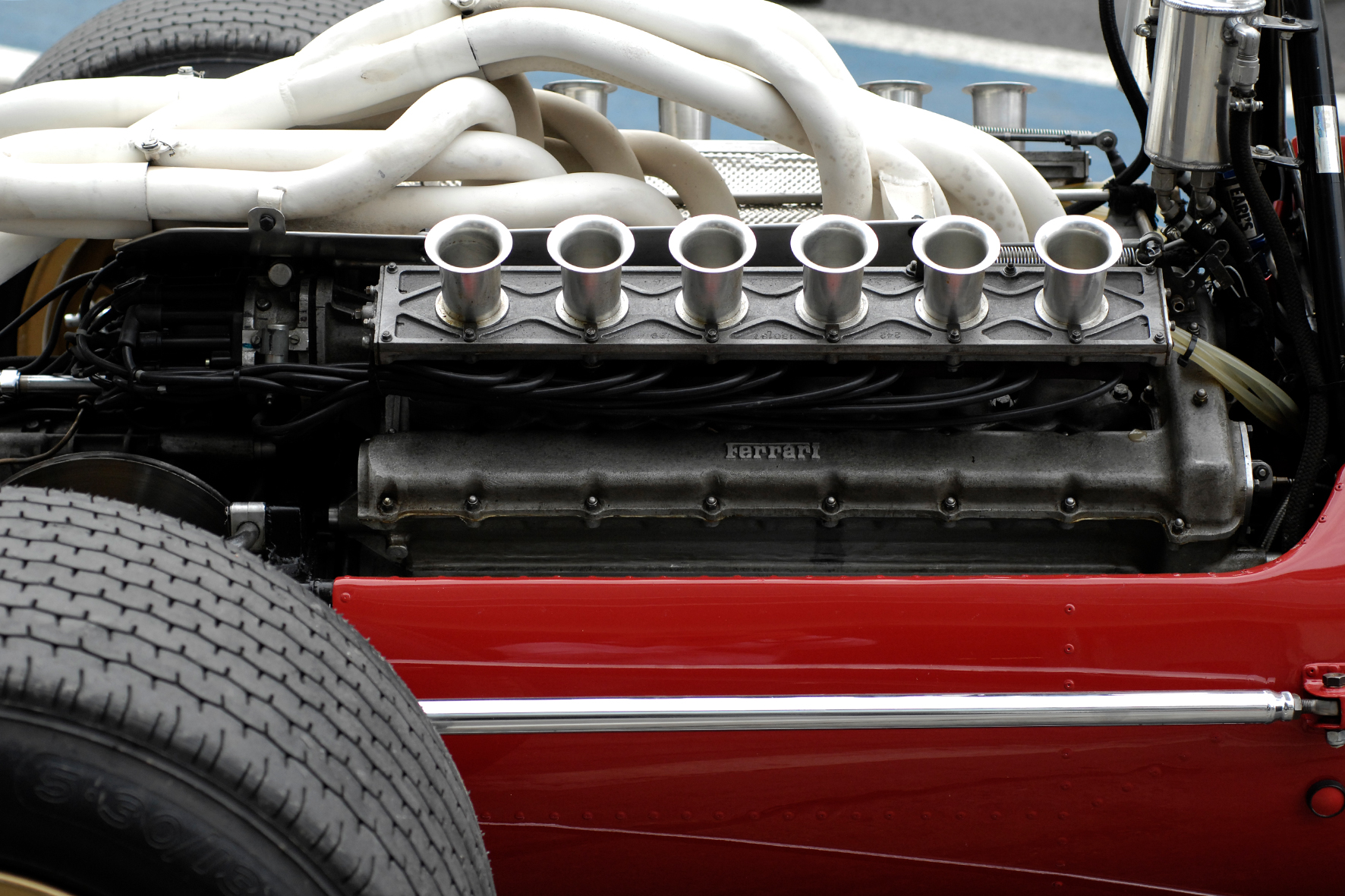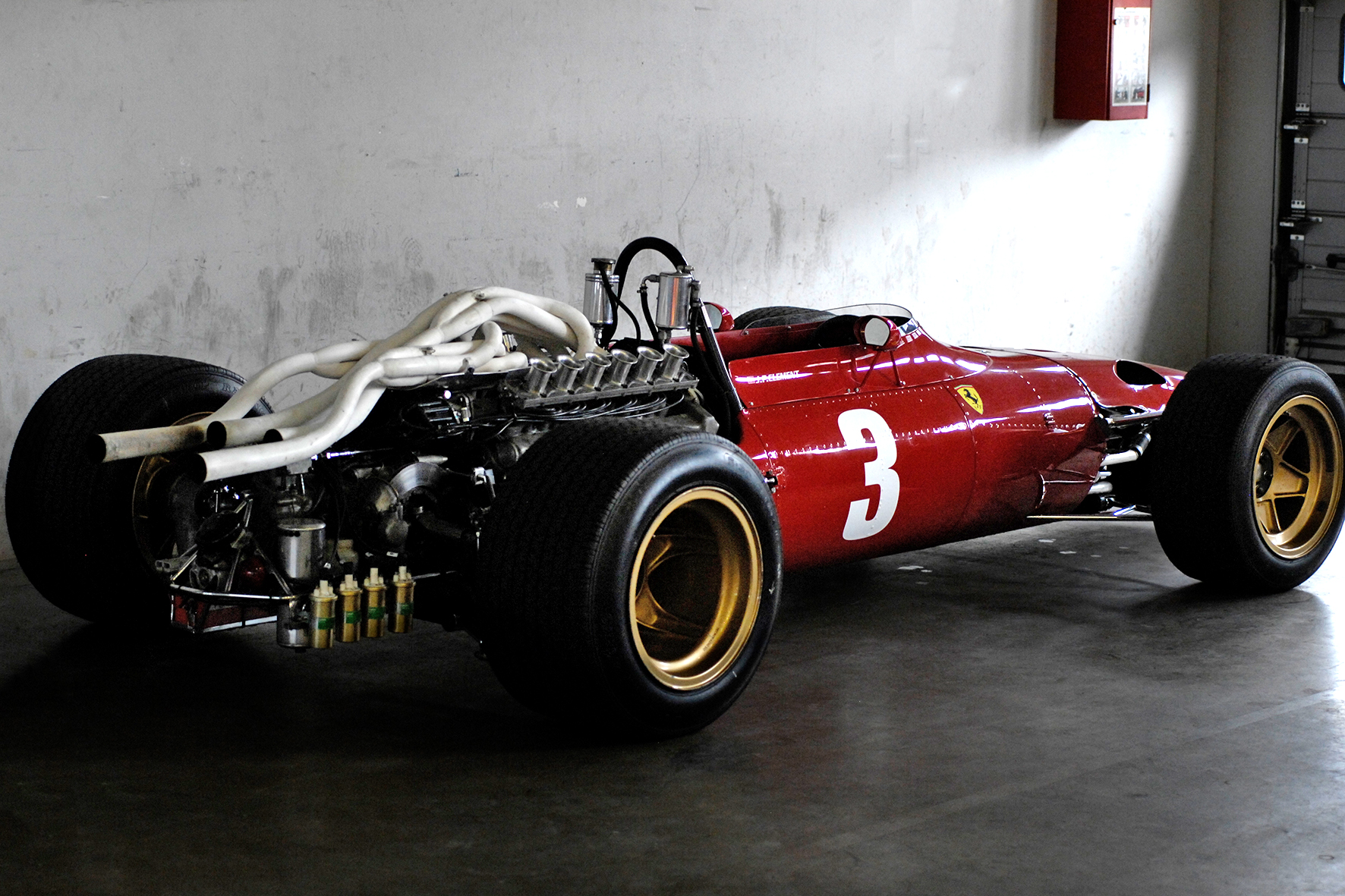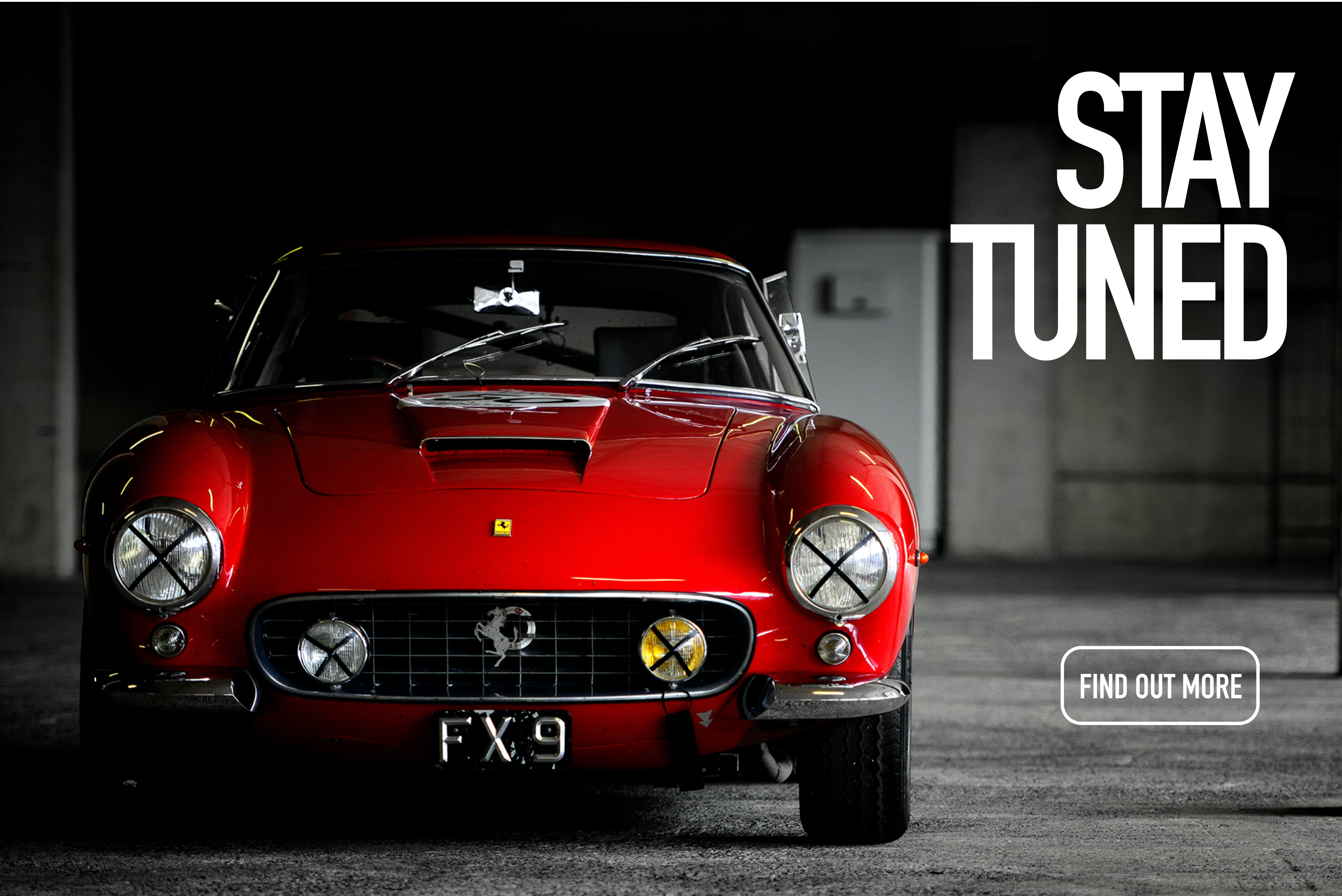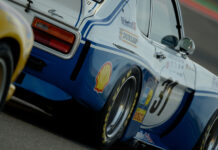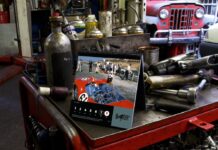When in 1966 the regulations for Formula One cars were changed to 3-litre engines, Ferrari named their cars 312. 3 for the 3-litre cubic capacity and 12 for the 12 cylinder engine. This kind of typology should last until 1980. In 1970 the V-engine angle was changed form 60˚ to 180˚. This modification brought a deeper center of weight and a better balance of driving.
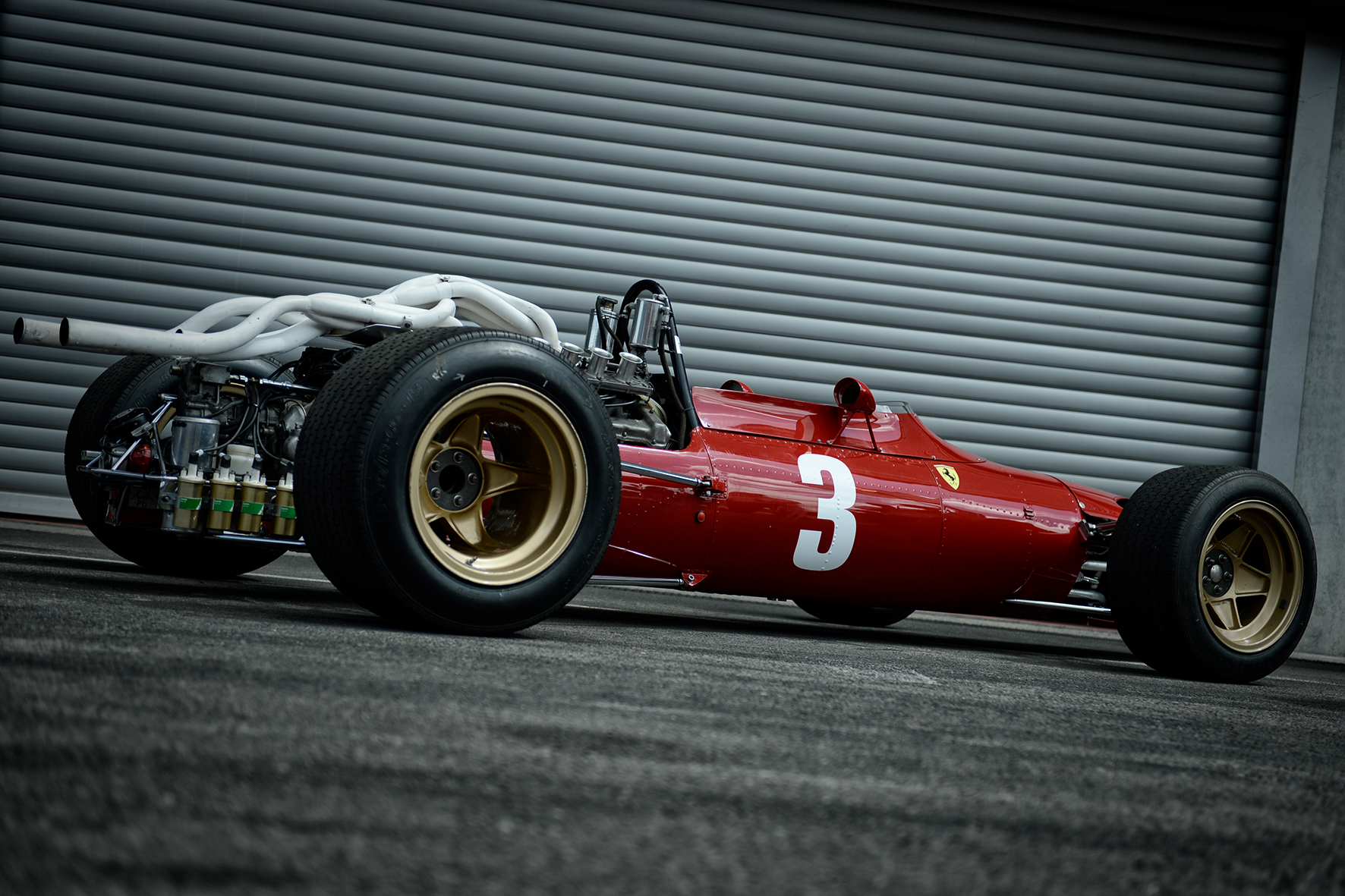
But back to the here shown fabulous Ferrari 312 with the funny nickname „Spaghetti“. It is obvious whats the reason for this nickname. The real complicated design of the white painted exhaust pipes which are located at the top of the beautiful engine, they look a bit like spaghetti.
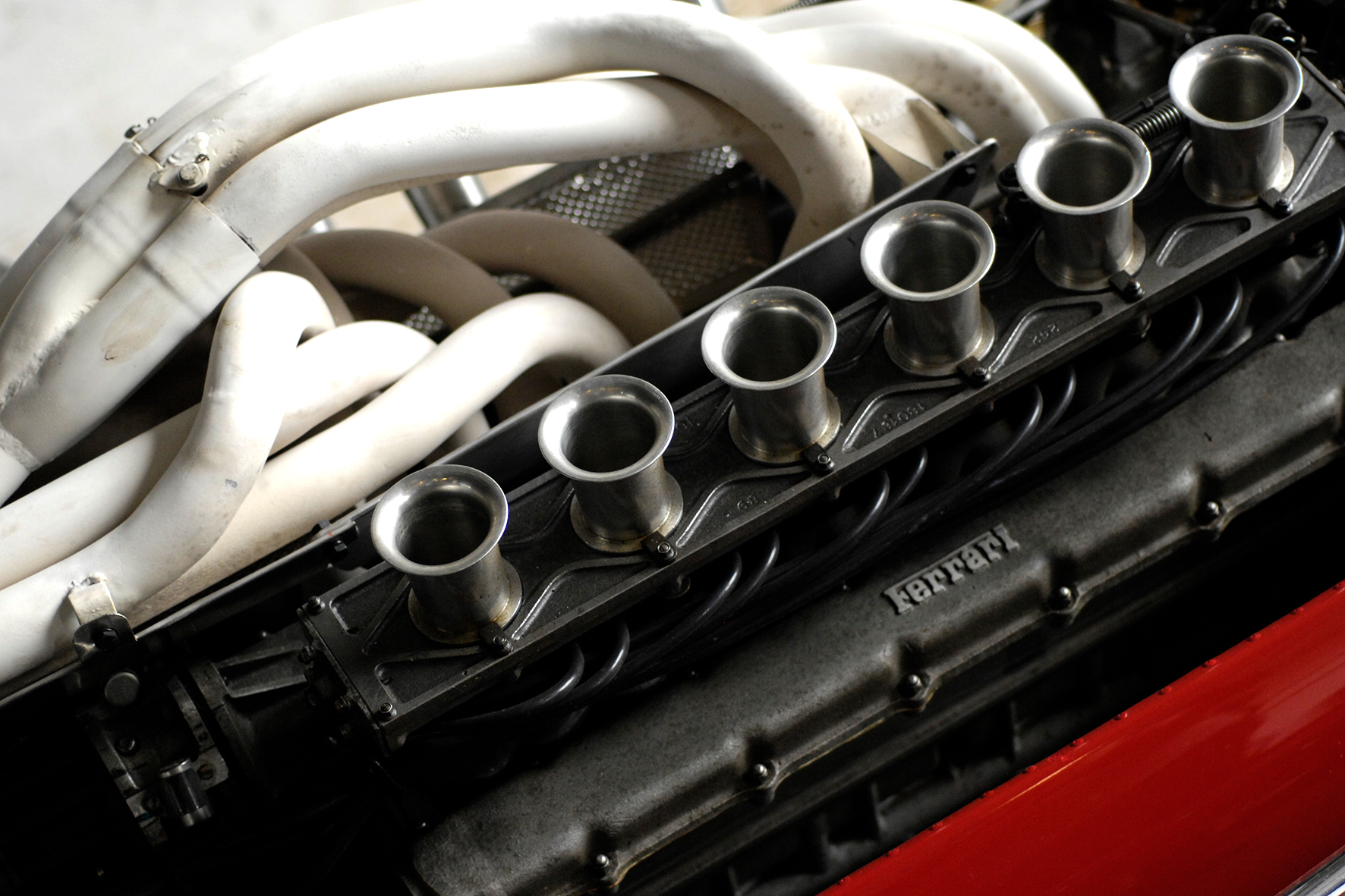
Formula One cars of this era had an almost simple outside shape, a bit like a cigar. The driver „seat“ wasn’t really to sat down, the driver just had a lying position to steer the car. Most of the cars of this time have a chassis with the cockpit and behind the bulkhead a supporting frame for the engine and the rear suspension. It was a simple but also very fragile construction.
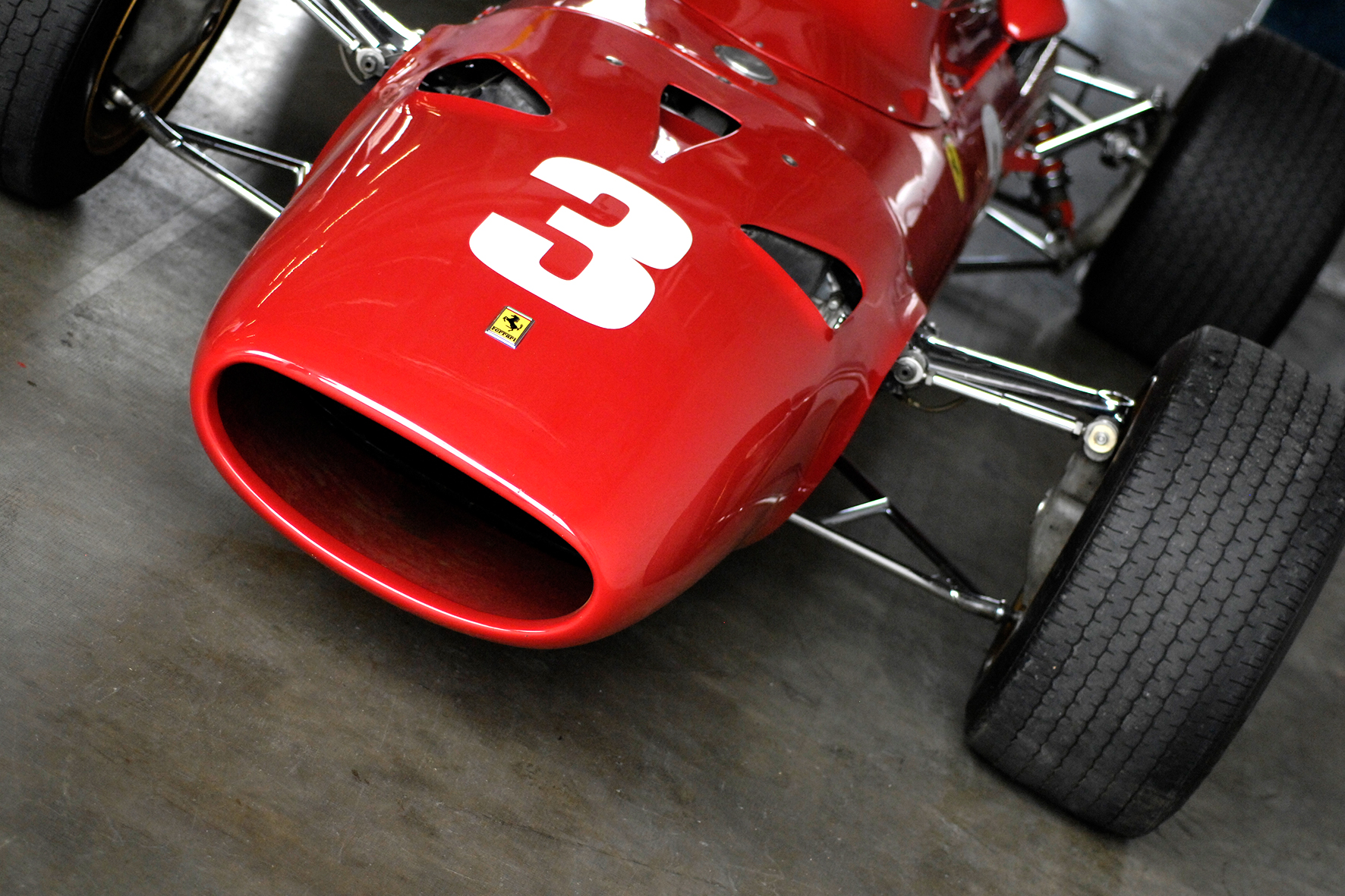
The fuel-tank was behind the bulkhead or much more often located around the driver to get much as possible weight in the middle of the car. It was of course dangerous but I think it must feel great to drive a Formula One car on the edge at this time. When they flew over the Nürburgring Nordschleife sometimes with four wheel off the ground, landing hard, the pilots have to pray that nothing will crack under this tough conditions.
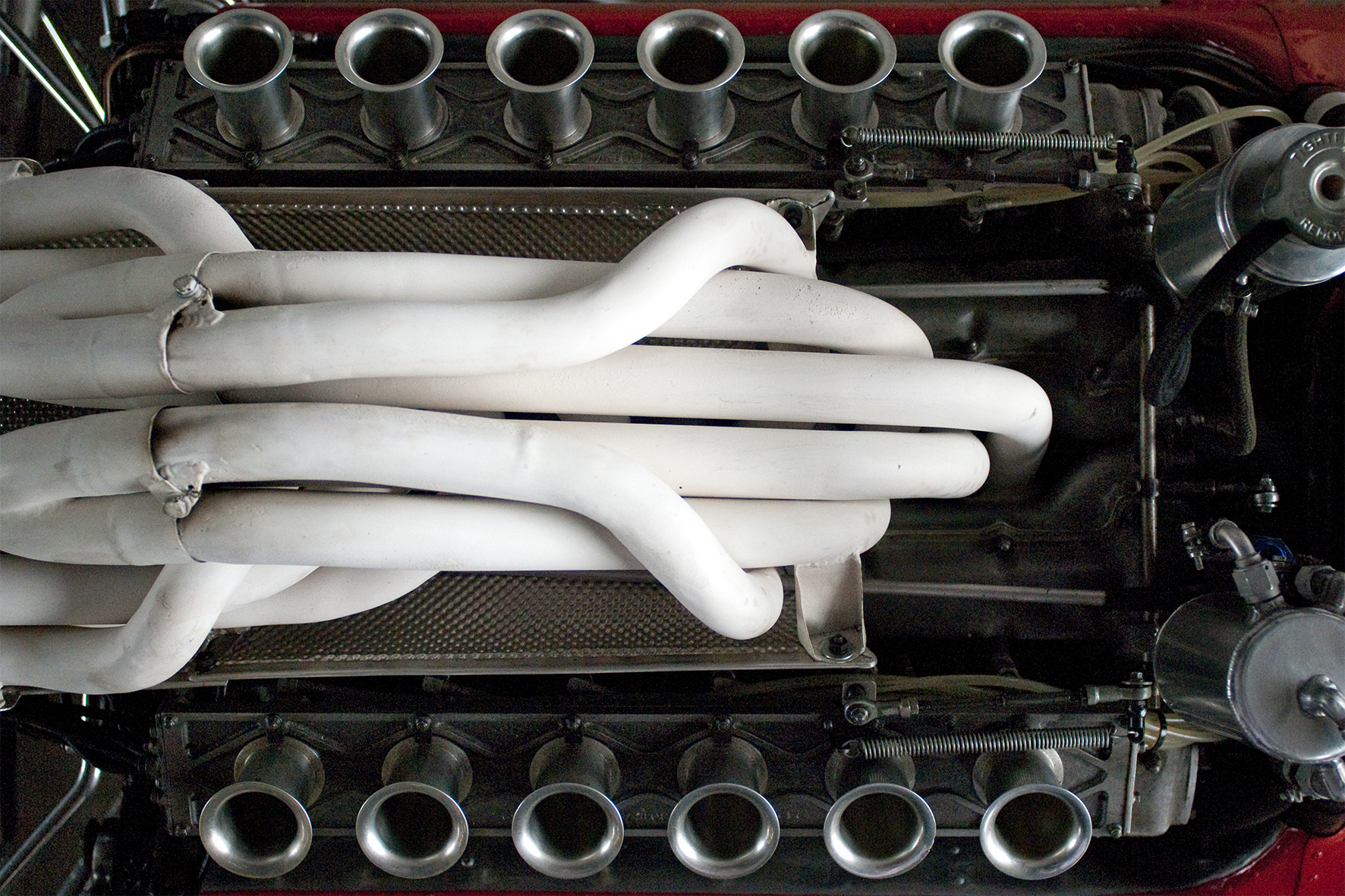
To see such a car today it is almost ridiculous how fragile their construction look, for me it is unimaginable , taking these risks of getting hurt or loosing your life. But there are always men, at every era of Formula One Racing, who want to drive one of these cars as fast as possible. Of course it gave them a huge satisfaction to be able to handle a Formula One with all the risks.

I love to watch F1 cars of this era, yes with a bit of mixed emotion, but my photographers eye is satisfied especially because of the visibility of technical details and constructions, the rivets, the small tyres, the suspensions and of course the screaming engine mounted in the supporting frame. Everything looks very logical at it’s place and you can follow the ideas of developing a F1 car even if you not be an engineer.
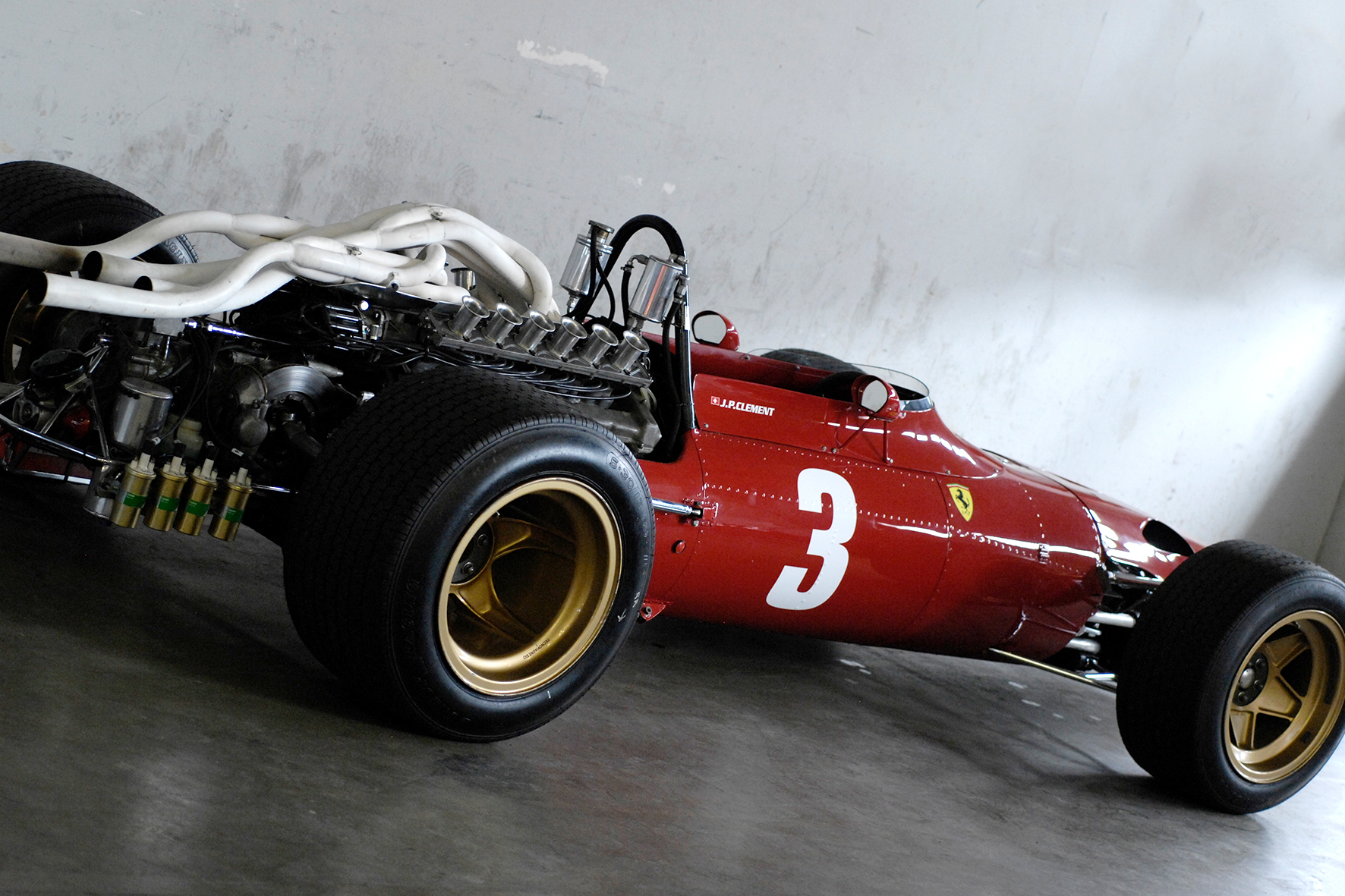
After winning the world title in 1964 with John Surtees driving the Ferrari 158 the Scuderia had a few difficult years and they have to wait until 1975 to win the championship again with Niki Lauda driving a 312T with the flat 180˚ V12 engine. The 312 has a long lifetime from 1966 to 1969 with a lot of modifications. It was the time were aerodynamic became more and more important to the design of Formula One cars. Front wings, rear wings, high mounted wings all the teams looking for downforce and more stability at the rear axle. The small English manufacturers like Brabham, Cooper and especially Lotus with the genius designer Colin Chapman was faster with creating ideas and realize them, looking on the effort, planning new variations and get a great advantage in performance. At the Scuderia Ferrari, there were so many people, so many engineers and last but not least Ingenere Ferrari himself – but everything lasted too long, every decision made by so many hands – at the end Ferrari was too big to be as fast as the English „garagisti“.
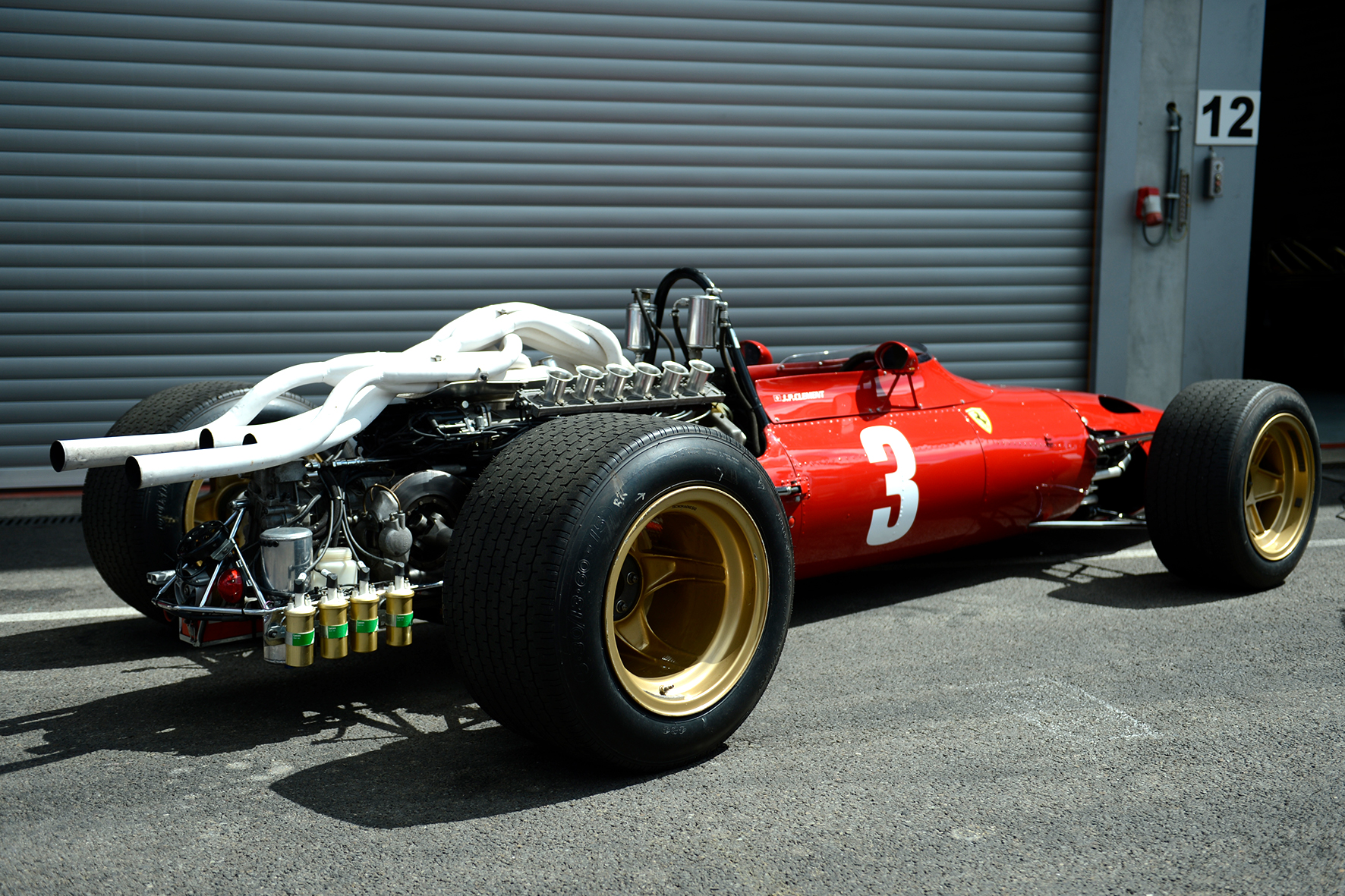
The 312 is a real beautiful race car and I love it very much, but it wasn’t really successful. Only three Grand Prix could be won with a 312. In 1966 the Belgian GP at Spa Francorchamps with John Surtess and the Italian GP at Monza with Ludovico Scarfiotti and in 1968 the French GP at Rouen les Essarts with Jacky Ickx. Find out more
TECHNICAL SPECIFICATION: Ferrari 312 / 67
MODEL 312 F1
TYPE Formula One race car / single seater
YEAR OF PRODUCTION different versions 1966 – 1968
ENGINE rear mounted 60˚ V12, light alloy block and heads
BORE AND STROKE 77 mm x 53,5 mm
UNITARY / TOTAL CAPACITY 249,1297 / 2.989,556 cc
HORSEPOWER 360 bhp at 10.000 rpm
TIMING GEAR 2 Valves per cylinder
TRANSMISSION rear longitudinal overhanging 5-speed gearbox
FRAME stress-bearing body, aluminium panels in double wall riveted to steel tube-structure
SUSPENSION FRONT double wishbones, inboard coaxial dampers, anti-roll bar
SUSPENSION REAR double wishbones, upper arm lover triangle anti-roll bar
BRAKES Gerling discs and calipers
WHEELBASE 2400 mm
TRACK FRONT / REAR 1450 mm / 1435 mm
TYRES FRONT / REAR 5.50 x 14“ / 7.00 x 14“ Dunlop
WEIGHT WITHOUT FUEL 610 kg

